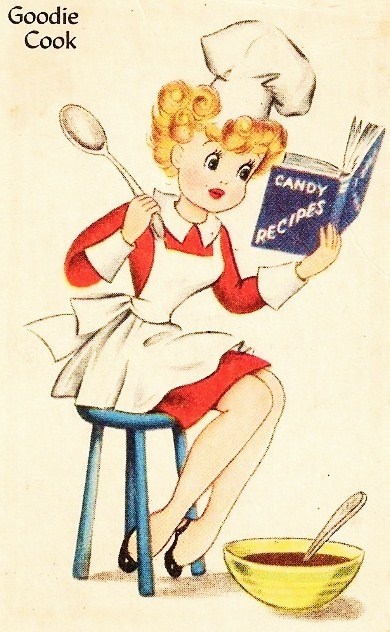
This entry is the first in a series about candy making. With summer and salt water taffy season around the corner I thought this would be a useful starting point to find out the vintage way of making some favorite candies. I found this overview in “Scammer’s Universal Treasure-House of Useful Knowledge. An Encyclopedia of Valuable Receipts in the Principal Arts of Life,” compiled and edited by Henry B. Scammell. Assisted by Experts in Every Department. 1889. Keep in mind that when referring to “bladders” I found that this means small air bubbles. I also tried in vain to find a definition of what “flirt” means in terms of cooking. If anyone knows what this was referencing, please comment in the section below the story.
An overview of candy making
REMARKS.—The different stages through which sugar passes in the process of candy making are as follows: The sugar is boiled until it becomes a perfectly transparent syrup; if further boiled until a portion “touched” between the forefinger and thumb, on opening them, is drawn into a small thread, which crystallizes and breaks, this stage is called the thread. If boiled again, it will draw into a larger string, and if bladders may be blown through the drippings from the ladle with the mouth, it is now called “bloom” sugar, or “boiled to the blow.” If, when reboiled, the skimmer is dipped in, and shook over the pan, and then given a sudden flirt behind, the sugar will fly off like feathers; this is called the “feathered” stage. The next stage is called the “crackled” stage, or “boiled to the crack.” In this stage the sugar hangs to a stick dipped into it, and if put directly into a pan of cold water turns hard and snaps. The next stage is the “caramel,” and is tested by dipping a stick first into the sugar, and then into cold water, when, on the moment it touches the latter, it will, if matured, snap like glass. It has now reached a full candy height. Throughout, the fire must not be too fierce, less it burn the sugar. If it is desired to work old candy over, dissolve it in water and run through a jelly-bag until clear.
I remember my mom using a candy thermometer–maybe a newer invention in the 1940s or 50s. (Wish I could remember what kind of candy she was making….)
I’ll have to look into that and see when those came into use. I’d love to know what kind of candy she made.